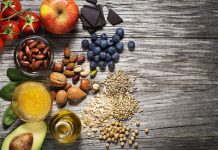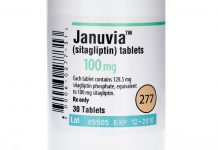When your grocery budget is tight, there are always two things you can count on: Bean and rice. These tough champions of small grocery budgets are affordable, accessible, and nutritious.
The beans make a versatile ingredient that can supply a pound of ground beef into a crowd-fed pot of chili. Add a little cheese and a can of tomatoes, and you’ve got a casserole for a hungry family. Stir them in a stockpot with last night’s leftovers, and you’ve got a nutritious soup.
In addition to stretching what you have and expanding your tight grocery budget, beans and other legumes are highly nutritious foods. There’s a reason pulses are among the best foods you can buy, whether your resources are tight or you have more wiggle room in your wallet.
What are pulses?
Beans belong to a food group called legumes, which also includes dried peas, lentils, and chickpeas. While all of these foods are also legumes, in the context of food, the term “legumes” refers specifically to the dry, edible variety.
Pulses are rich in minerals, B vitamins, dietary fiber, and contain a good amount of protein.
A cup of lentils contains nearly 90 percent of the daily value of folic acid, a nutrient essential for women of childbearing age for its ability to prevent neural tube defects, and a good source of both potassium and iron.
Likewise, chickpeas are rich in vitamin B6, which supports the immune system and protects the body from infection. They also contain an ample amount of phosphorous, a mineral that supports bone and cellular health, as well as manganese, which supports metabolism and blood sugar regulation.
In addition to fiber, protein, and plenty of vitamins and minerals, pulses are also a rich source of antioxidants. Black beans and kidney beans contain anthocyanins, a flavonoid also found in red wine, tea, and blueberries that gives them their dark, dark color.
Like other antioxidants, anthocyanins calm inflammation and support heart and metabolic health. Some research has linked phytonutrients to the prevention of cardiovascular disease, diabetes, and some types of cancer. Organically grown beans tend to be richer in these compounds than those grown on conventional farms.
Beans and lentils are so nutritious that researchers consider them functional foods, meaning they offer more health benefits than basic health benefits. feed lonliness. A 2018 study published in Clinical Nutrition found that a diet rich in beans reduces the risk of type 2 diabetes and cardiovascular disease.
Similarly, many studies show that people who eat beans are less likely to develop cancer. Researchers attribute these benefits to the antioxidant-rich properties and abundance of fiber in pulses.


Make beans a little better
While beans are certainly healthy, they cause digestive upsets for many people. Beans and other legumes contain raffinose, which is a difficult-to-digest complex carbohydrate, and phytate, a powerful antioxidant that also binds to certain minerals like iron, zinc and calcium and makes them difficult for your body to absorb. To remedy this problem, take care to prepare the beans.
Traditionally, cooks soak, sprout, or brew some legumes, all steps that make them a little more nutritious and easier on the digestive system. Soaking the beans overnight helps combat the effects of raffinose and food phytates—especially if you add a bit of baking soda to the water, which helps break down the raffinose—and also makes the minerals in them more bioavailable, which is easier for your body to use.
If you’re concerned about lectins, a type of carbohydrate-related protein found in legumes, make sure that soaking and cooking them over high heat, especially pressure cooking, inactivates most of the lectins.
Buying canned beans is an easy and affordable option for most people; However, you will save more money by buying dried beans and cooking them yourself. Soak overnight, cook in large batches, then freeze what you don’t use right away in 1-cup portions for easy use later.
Because of their earthy flavor and need for long cooking, beans are often used during the cooler months of fall and winter—but there are plenty of ways to cook with these affordable nutritional powers in the summer, too.
Bean and chickpea salads are a classic option. It’s easy and affordable, can be served cold or at room temperature, and stays like a champ, making it perfect for both weekday packed lunches. The trick to getting this vibrant bean salad is to add just enough acid, salt, and herbs to liven up the natural, earthy flavor. Plenty of vinegar will do, along with green onions or garlic, parsley, cayenne pepper, and a pinch of salt.
Snorkeling is another excellent option for warm weather. There is hummus that is traditionally made with chickpeas, but you can make similar sauces using just about any pulse. Try mashing red lentils with chili paste and lots of olive oil, or share white beans with sage and garlic for a classic flavor combination.
Recipe: chickpea salad
Recipe: spiced beans
Recipe: red lentil sauce




